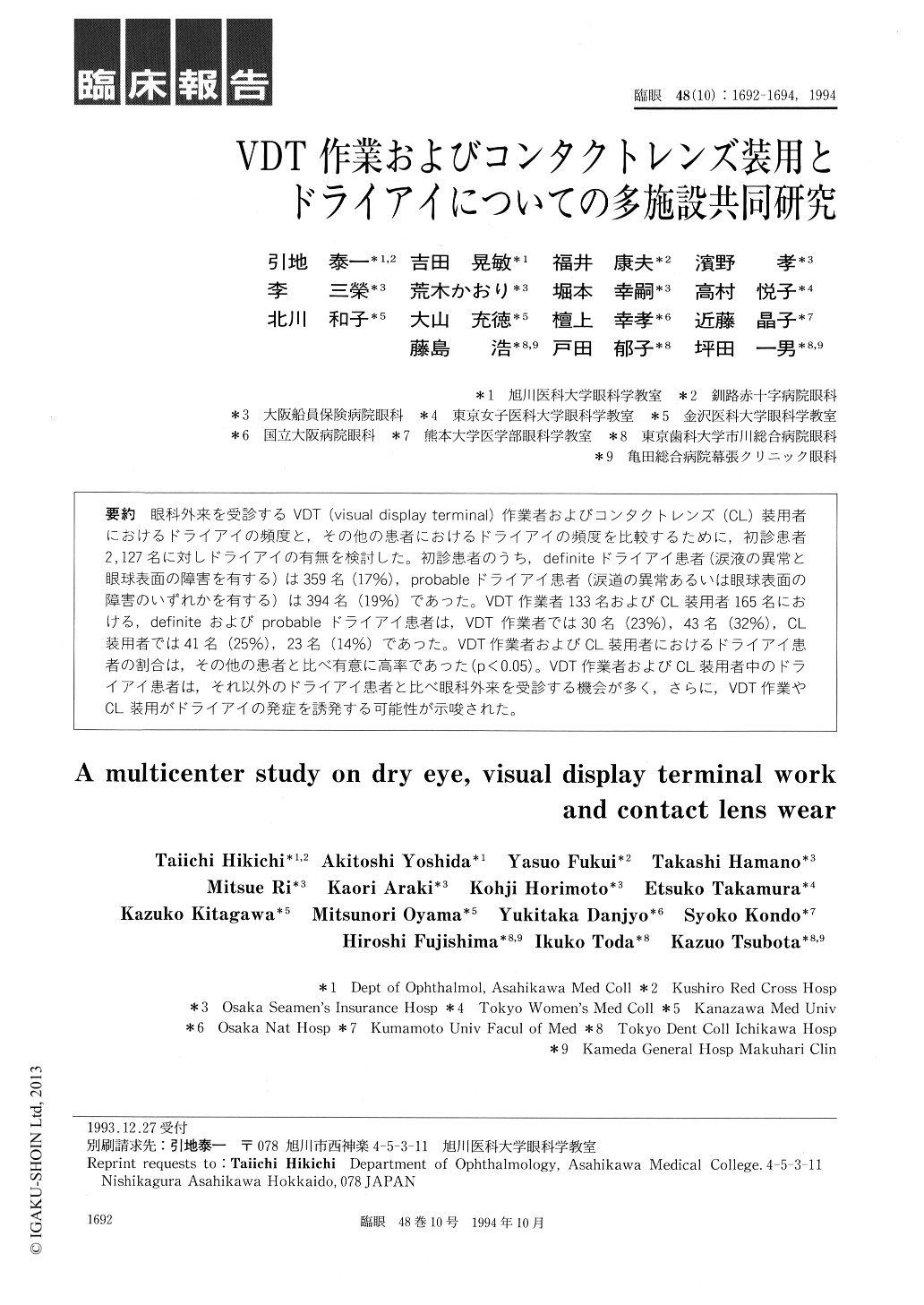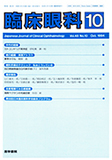Japanese
English
- 有料閲覧
- Abstract 文献概要
- 1ページ目 Look Inside
眼科外来を受診するVDT (vlsual display terminal)作業者およびコンタクトレンズ(CL)装用者におけるドライアイの頻度と,その他の患者におけるドライアイの頻度を比較するために,初診患者2,127名に対しドライアイの有無を検討した。初診患者のうち,definiteドライアイ患者(涙液の異常と眼球表面の障害を有する)は359名(17%),probableドライアイ患者(涙道の異常あるいは眼球表面の障害のいずれかを有する)は394名(19%)であった。VDT作業者133名およびCL装用者165名における,definiteおよびprobableドライアイ患者は,VDT作業者では30名(23%),43名(32%),CL装用者では41名(25%),23名(14%)であった。VDT作業者およびCL装用者におけるドライアイ患者の割合は,その他の患者と比べ有意に高率であった(p<0.05)。VDT作業者およびCL装用者中のドライアイ患者は,それ以外のドライアイ患者と比べ眼科外来を受診する機会が多く,さらに,VDT作業やCL装用がドライアイの発症を誘発する可能性が示唆された。
We evaluated 2,127 persons regarding dry eye, professional activity with visual display terminal (VDT) and contact lens wear in a cooperative study of 9 eye clinics. We identified 359 patients with dry eye, 17%, and 394 probable ones, 19%. In 133 VDT workers, there were 30 definite dry eye patients, 23%, and 43 probable ones, 32%. In 165 Contact lens users, there were 41 definite dry eye patients, 25%, and 23 probable ones, 14%. The incidence of dry eye was thus higher among VDT workers and contact lens users than in others (p<0.05). The findings seemed to imply that dry eye patients in VDT workers and contact lens wearers are more motivated to seek ophthalmological advice than other dry eye persons. There was another possibility that VDT works or contact lens wear may contribute to development of dry eye.

Copyright © 1994, Igaku-Shoin Ltd. All rights reserved.


